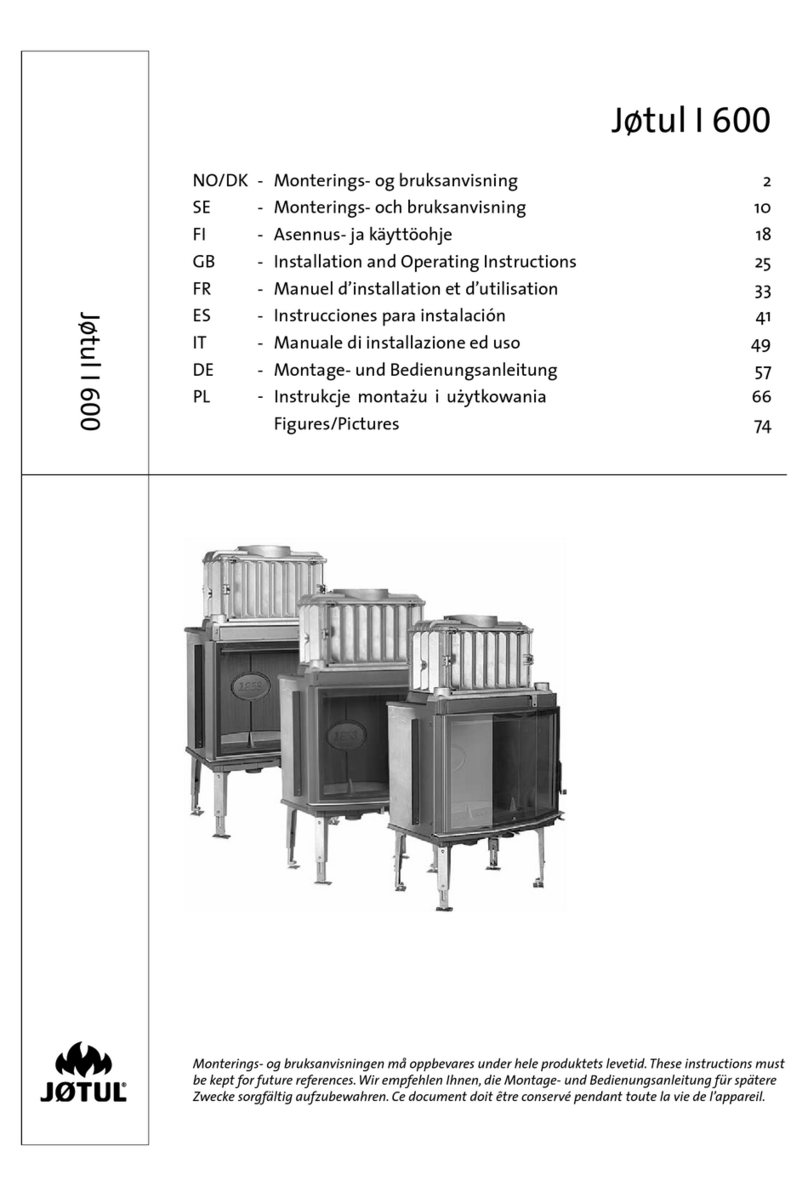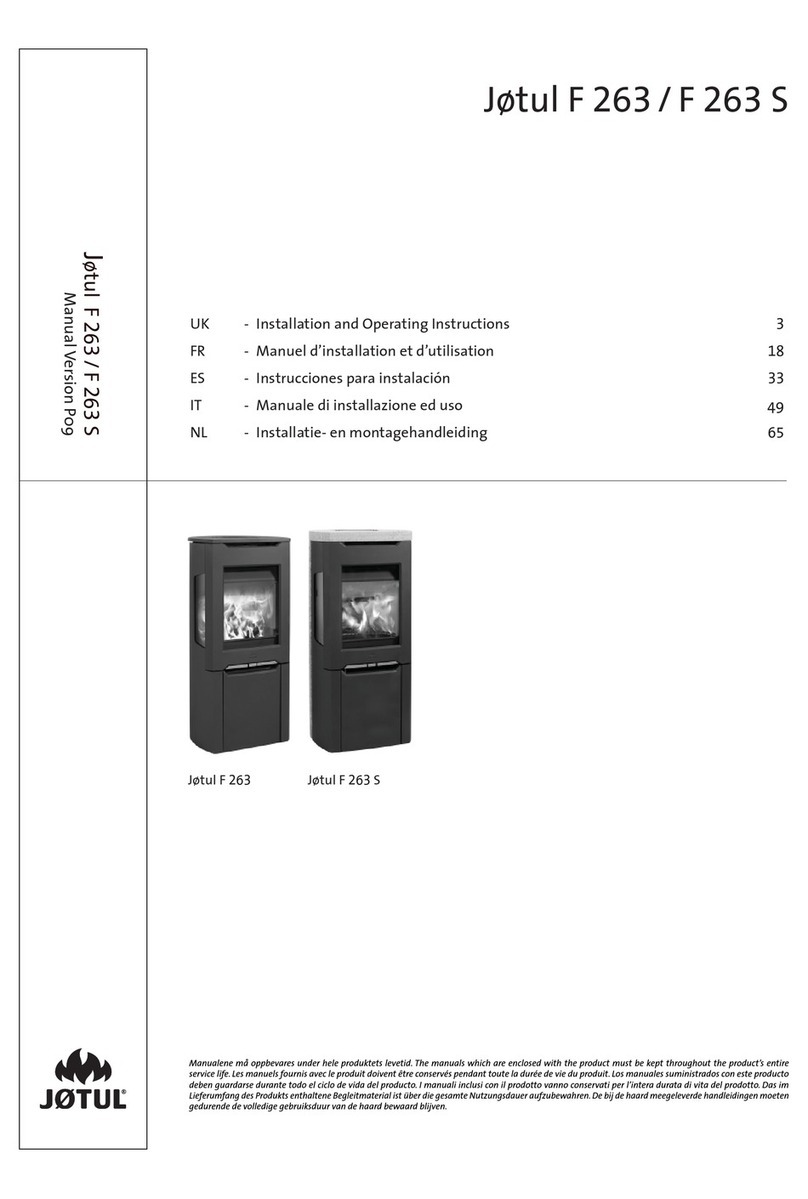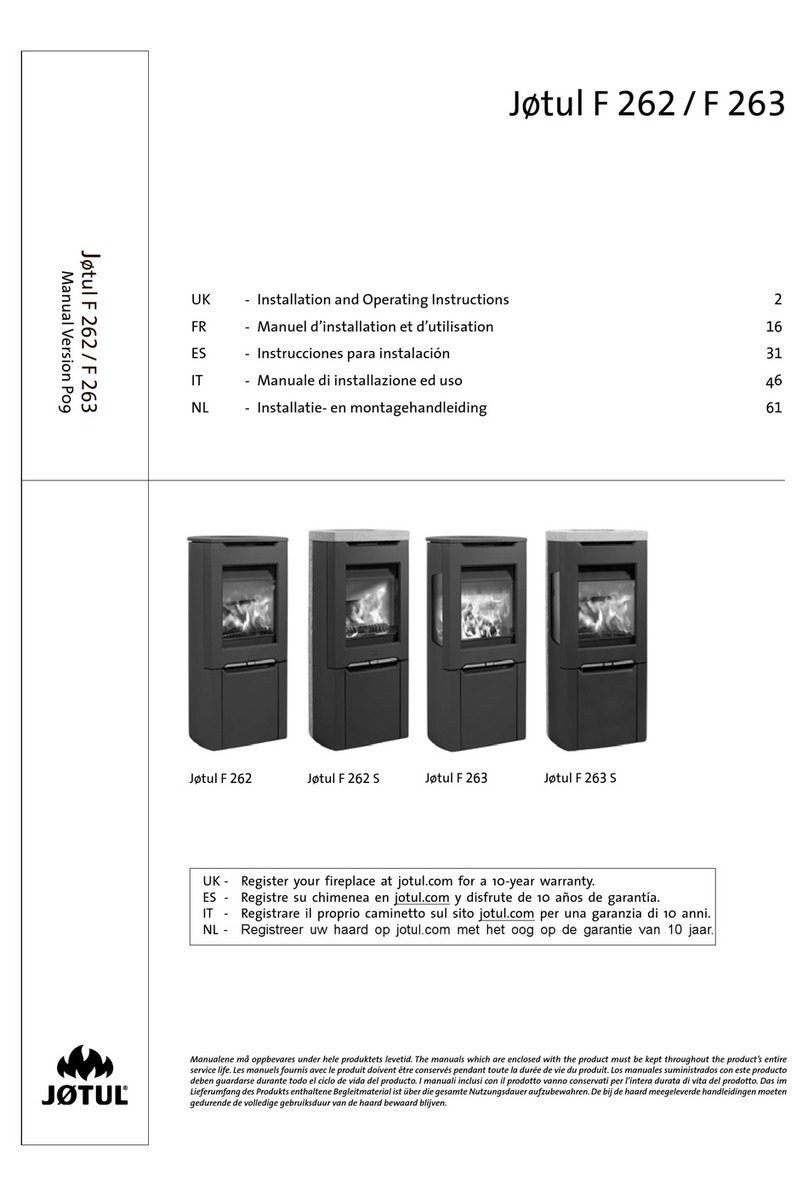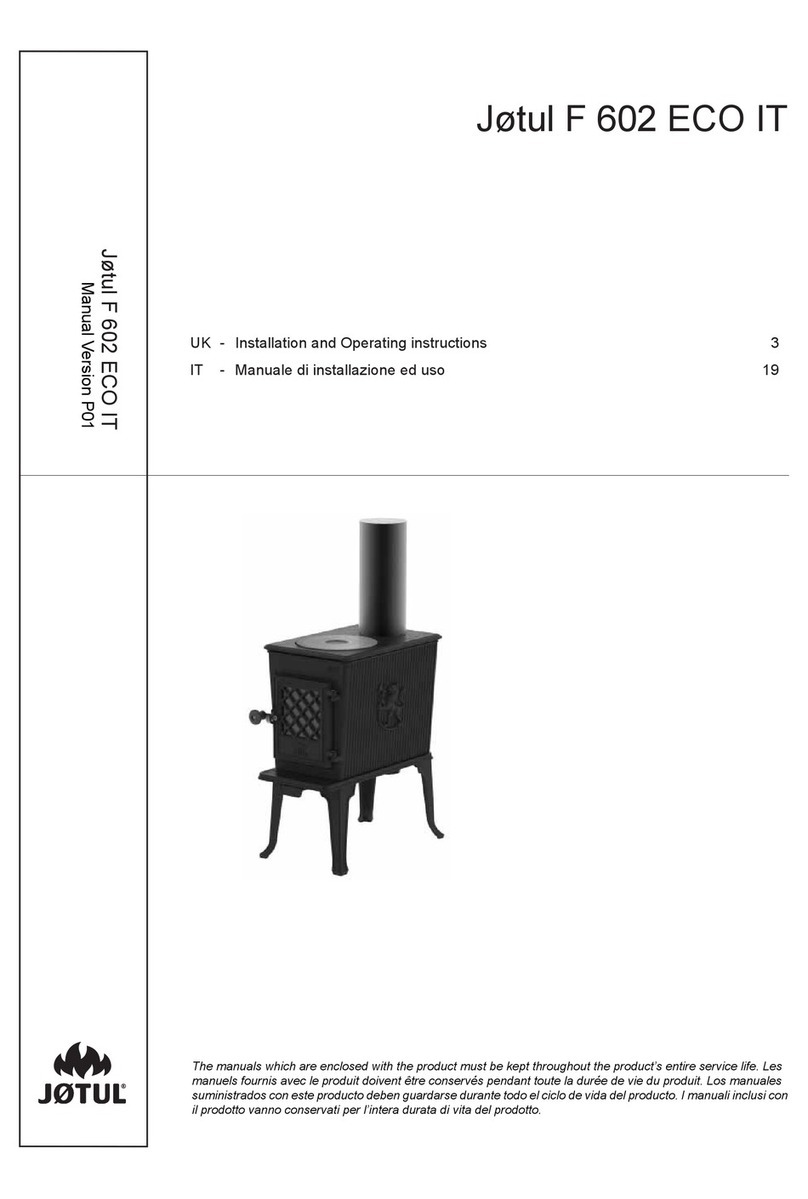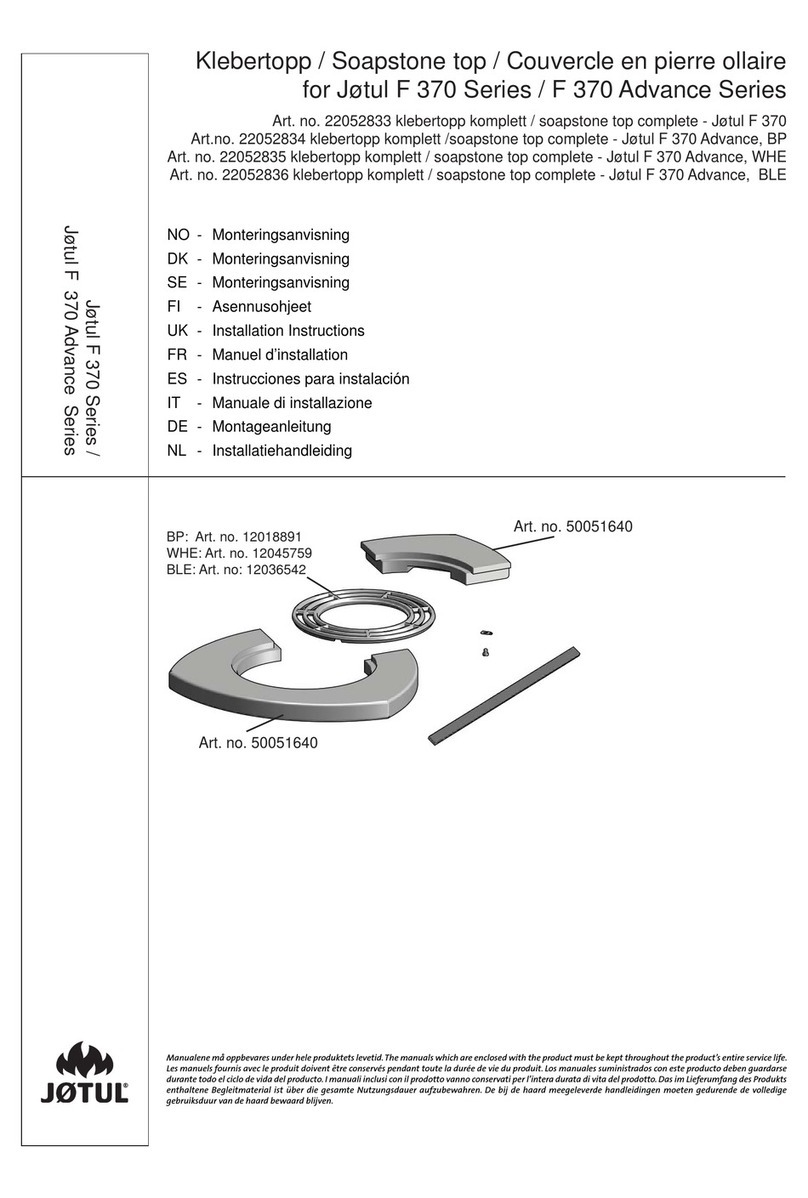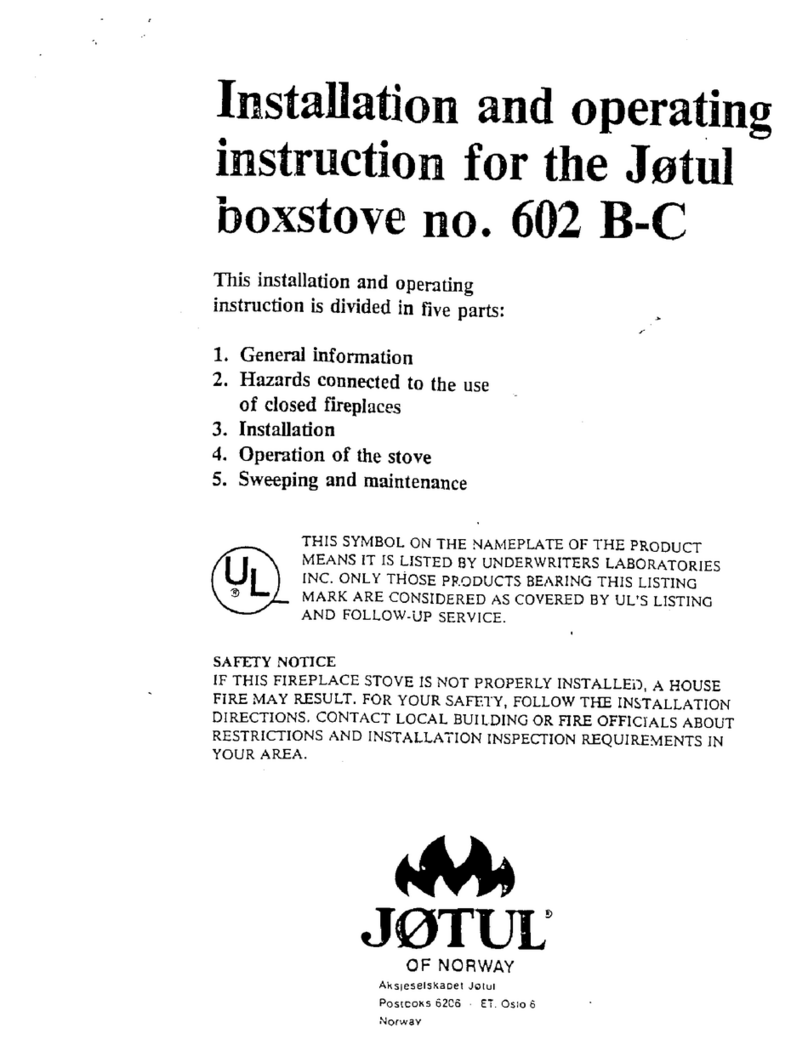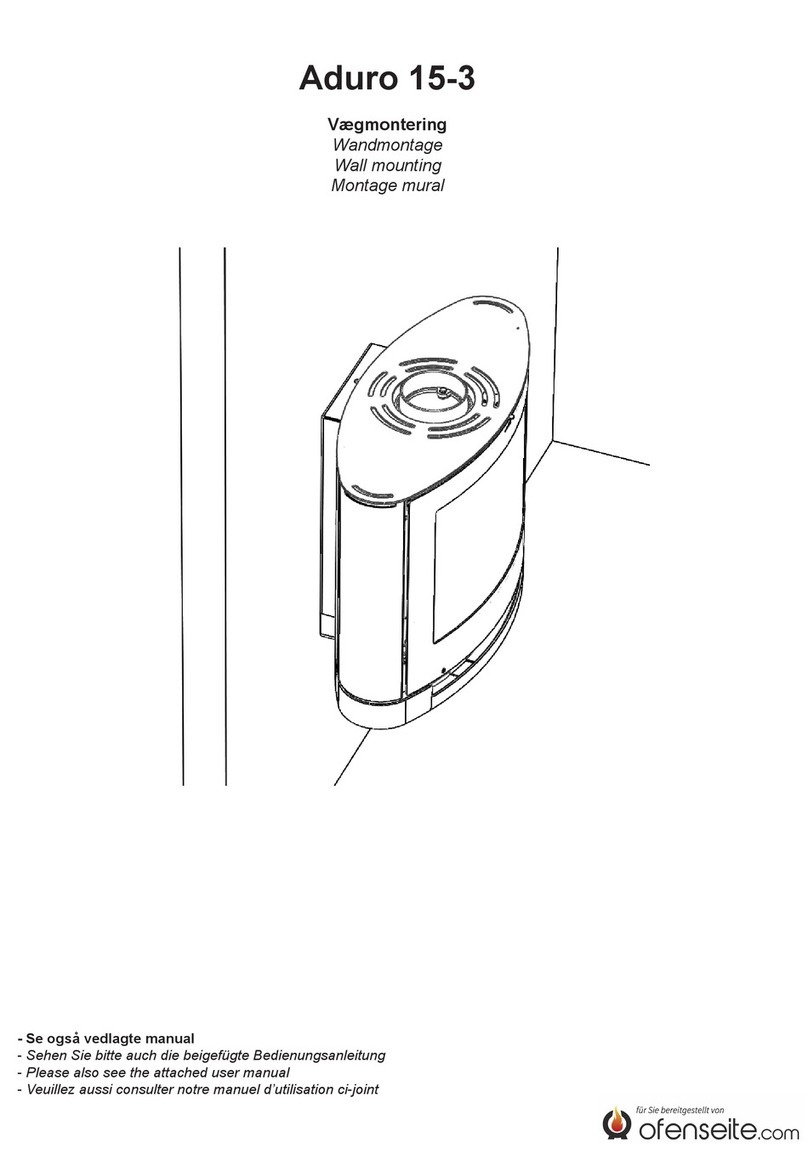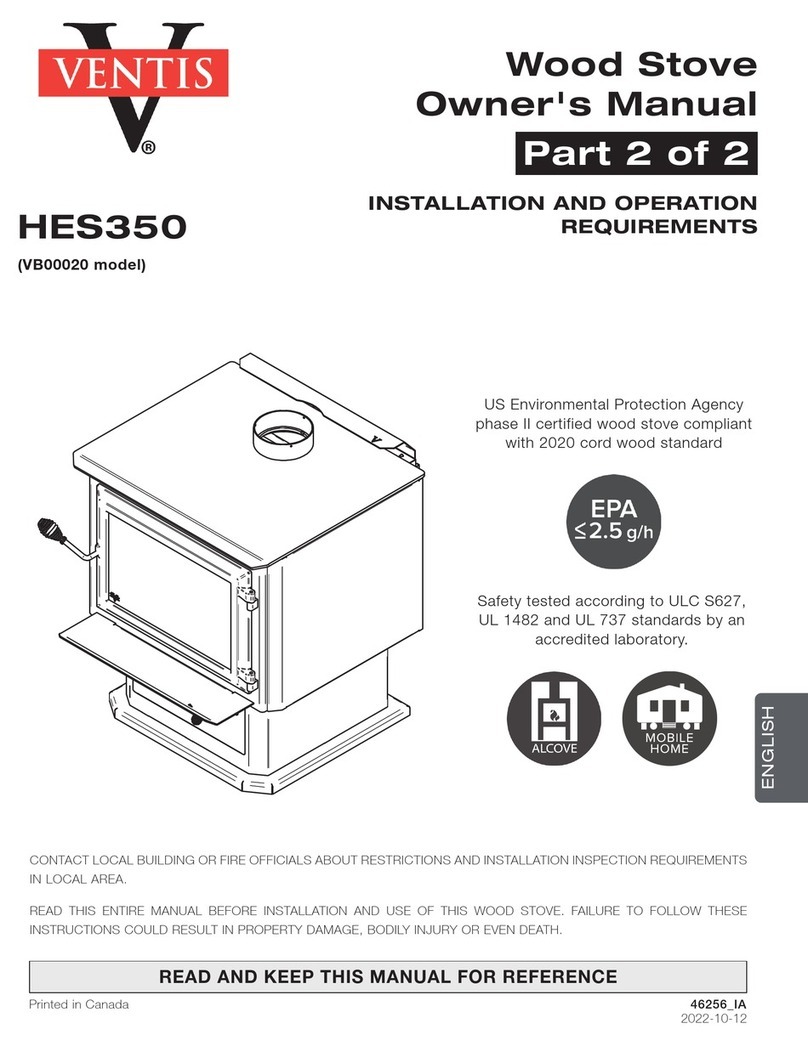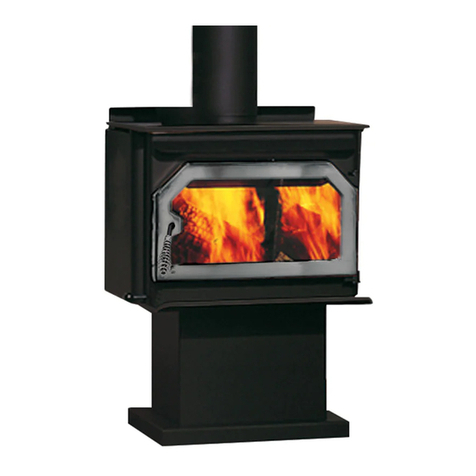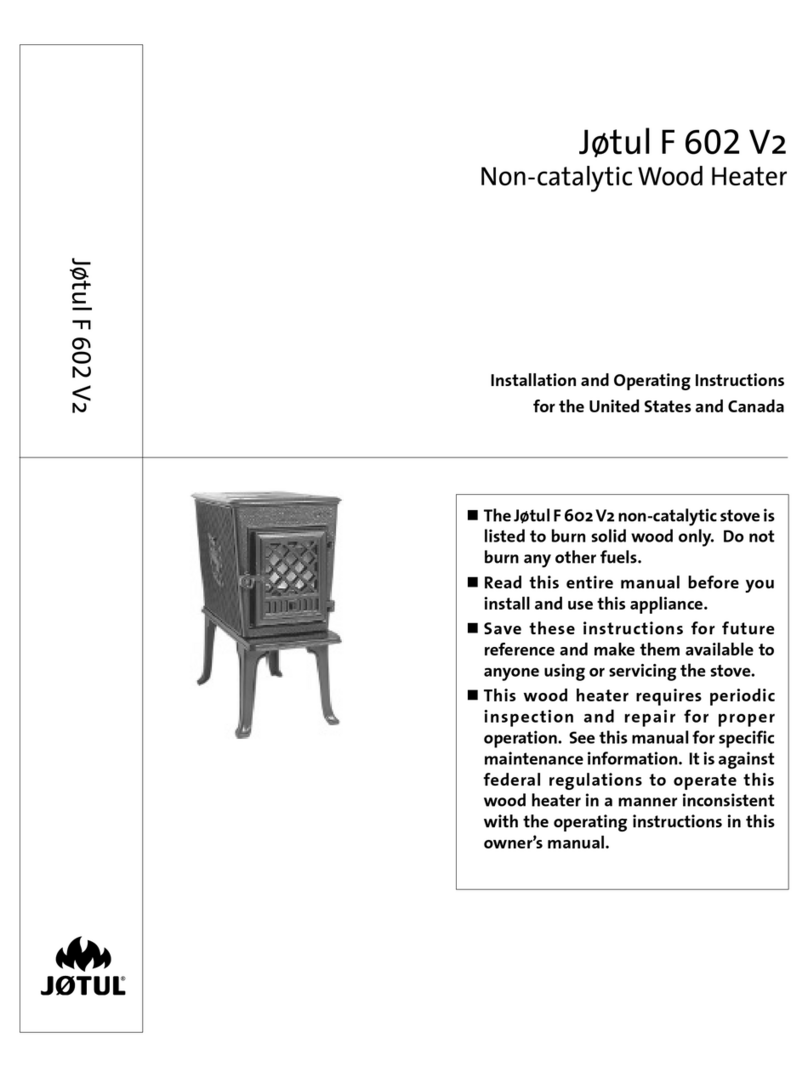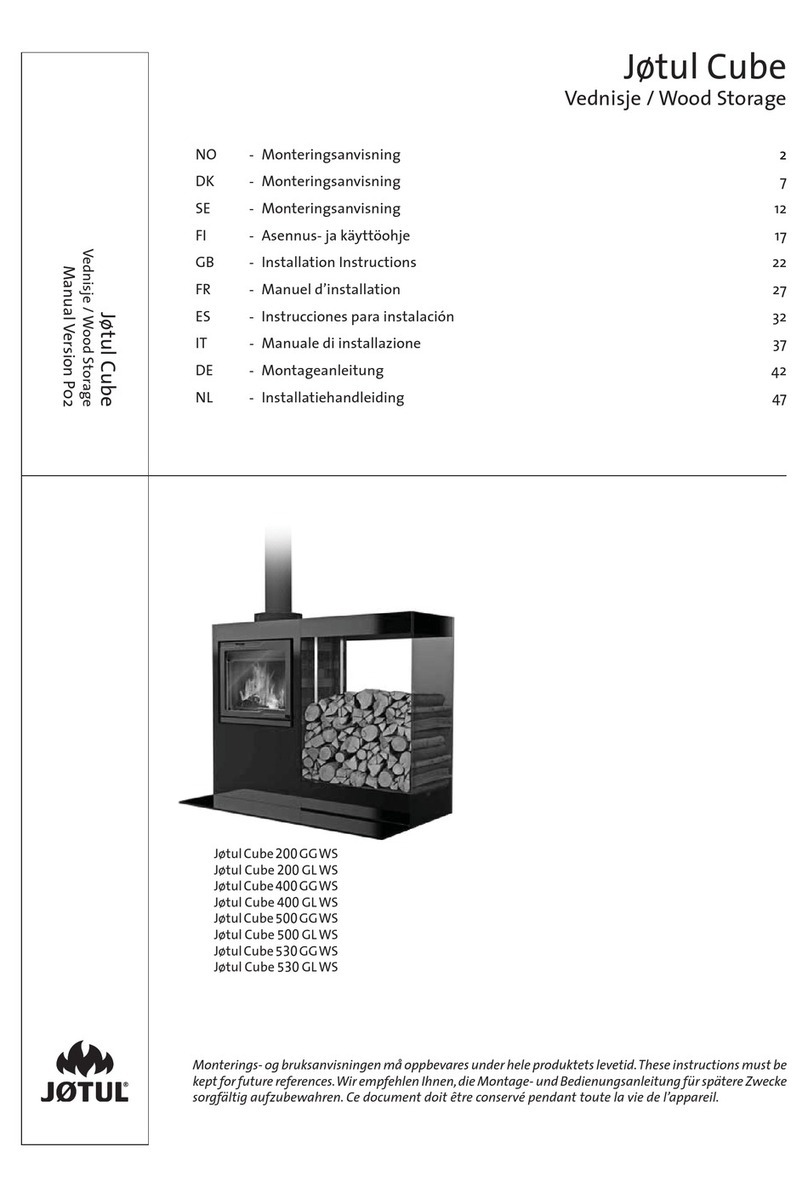
4
ENGLISH
3.0 Safety
NB! To guarantee optimal performance and safety, Jøtul
recommends that its stoves are fitted by a qualified
installer (see www.jotul.com for a complete list of dealers).
Any modifications to the product may result in the product
and safety features not functioning as intended. The same
applies to the installation of accessories or optional extras not
supplied by Jøtul. This may also be the case if parts that are
essential to the functioning and safety of the fireplace have
been disassembled or removed.
In all these cases, the manufacturer is not responsible or liable
for the product and the right to make a complaint becomes null
and void.
3.1 Fire Prevention Measures
There is a certain element of danger every time you use
your fireplace. The following instructions must therefore be
followed:
• The minimum safety distances when installing and using
the fireplace are given in fig. 1. The specified distance to
flammable materials, applies to this stove. The stove must
be installed with a CE approved flue. The distance of the
flue pipe to combustible materials must also be observed.
• Ensure that furniture and other flammable materials are not
too close to the fireplace. Flammable materials should not
be placed within min. 700 mm of the fireplace.
• Allow the fire to burn out. Never extinguish the flames with
water.
• The fireplace becomes hot when lit and may cause burns
if touched.
• Only remove ash when the fireplace is cold. Ash can contain
hot embers and should therefore be placed in a non-
flammable container.
• Ash should be placed outdoors or be emptied in a place
where it will not present a potential fire hazard.
In case of chimney fire:
• Close all hatches and vents.
• Keep the firebox door closed.
• Call the fire service.
• Before use after a fire an expert must check the fireplace
and the chimney in order to ensure that it is fully functional.
•
3.2 Floor
Foundation
You need to make sure the foundation is suitable for a fireplace.
See “2.0 Technical Data” for specified weight.
We recommend the removal of any flooring that is not attached
to the foundation (“floating floors”) beneath the installation.
Requirements for protection of wooden
flooring beneath the fireplace
The product can be placed directly on a wooden floor,
protected by a floor plate made from non combustible material
(recommended thickness - minimum 0,9 mm)
Jøtul recommends that any flooring made of combustible
material, such as linoleum, carpets, etc. should be removed
from under the floor plate.
Requirements for protection of
inflammable floors under the fireplace
The floorplate must comply with national laws and regulations.
Contact your local building authorities regarding restrictions
and installation requirements.
3.3 Walls
• The product should be placed so that it is possible to clean
the stove, flue pipe and chimney outlet.
• Make sure furniture and other combustible materials do not
get too close to the stove.
• Make shure furniture and other items are not placed too
close to the stove, to prevent them from drying out.
Distance to wall of combustible material - see fig. 1. The
distance is with a shielded flue / semi-insulated pipe.
The fireplace can be installed with uninsulated flue. Then the
flue must be CE marked and the declared distance of the pipe
to combustible must be maintained.
Combustible wall protected by firewall
Distance to combustible wall protected by firewall: See fig. 1
. Distances with semi-inslulated chimney/shielded flue pipe
are shown in fig. 1.
Firewall requirement
The firewall must be at least 100 mm thick and be made of
brick, concrete-stone or light concrete. Other materials and
structures with satisfactory documentation may also be used.
Non-combustible materials mean materials like brick, clinker,
concrete, mineral wool, cilicate plates etc (materials that do
not burn). Note! A short distance to non-combustible wall
may lead to desiccation and discoloration of paint and cause
cracking.
3.4 Ceiling
There must be a minimum distance of 750 mm to a combustible
ceiling above the fireplace.










